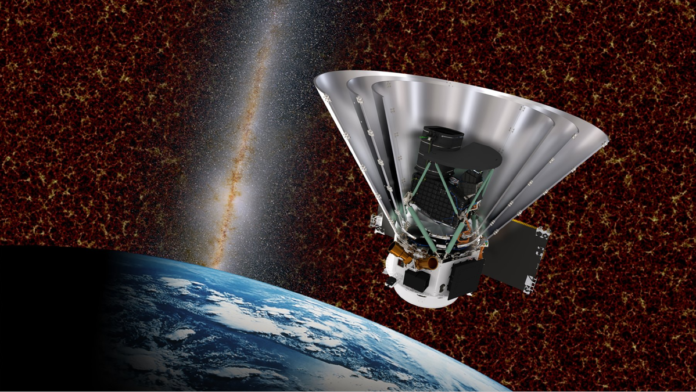NASA’s latest space telescope has successfully launched into orbit, embarking on a mission to map the entire sky like never before. The Spherex observatory, designed to conduct a sweeping survey of hundreds of millions of galaxies, will provide insights into the evolution of the cosmos and the rapid expansion of the universe in its earliest moments.
Launched aboard a SpaceX Falcon rocket from California, Spherex will orbit Earth from pole to pole at an altitude of 400 miles (650 kilometers). Alongside the telescope, four suitcase-sized satellites were also deployed to study the sun’s corona and solar wind.
Unveiling the Cosmic Glow
The $488 million Spherex mission is designed to analyze how galaxies formed and evolved over billions of years. Unlike the Hubble and James Webb space telescopes, which focus on capturing detailed images of individual celestial objects, Spherex will measure the total glow produced by all galaxies, including the earliest ones formed after the Big Bang.
By detecting this cosmic light, scientists aim to uncover previously unseen sources of illumination and better understand the origins of the universe. The telescope’s infrared detectors will be able to distinguish 102 colors that are invisible to the human eye, producing the most comprehensive and colorful map of the cosmos ever created.
Revolutionary Infrared Technology
To maintain optimal performance, Spherex is equipped with a specialized cooling system designed to keep its infrared detectors at an ultra-cold temperature of -350 degrees Fahrenheit (-210 degrees Celsius). This unique feature is housed within three aluminum-honeycomb cones that shield the telescope from the heat of the sun and Earth, giving it a distinctive layered design.
Over the next two years, Spherex will conduct four full-sky surveys, scanning the cosmic landscape with a wide field of view. The data collected will help scientists study interstellar clouds in the Milky Way, where water and other life-sustaining elements are thought to exist in abundance.
Additional Space Science Mission
In addition to Spherex, the Falcon rocket also carried NASA’s Punch satellite system, a set of four small spacecraft that will observe the sun’s outer atmosphere, known as the corona. These satellites will provide valuable insights into solar wind and its impact on space weather.
With its ambitious mission now underway, Spherex is set to unlock new cosmic mysteries and expand humanity’s understanding of the universe.
Stay tuned to DC Brief for further updates on this story and other technology developments.


